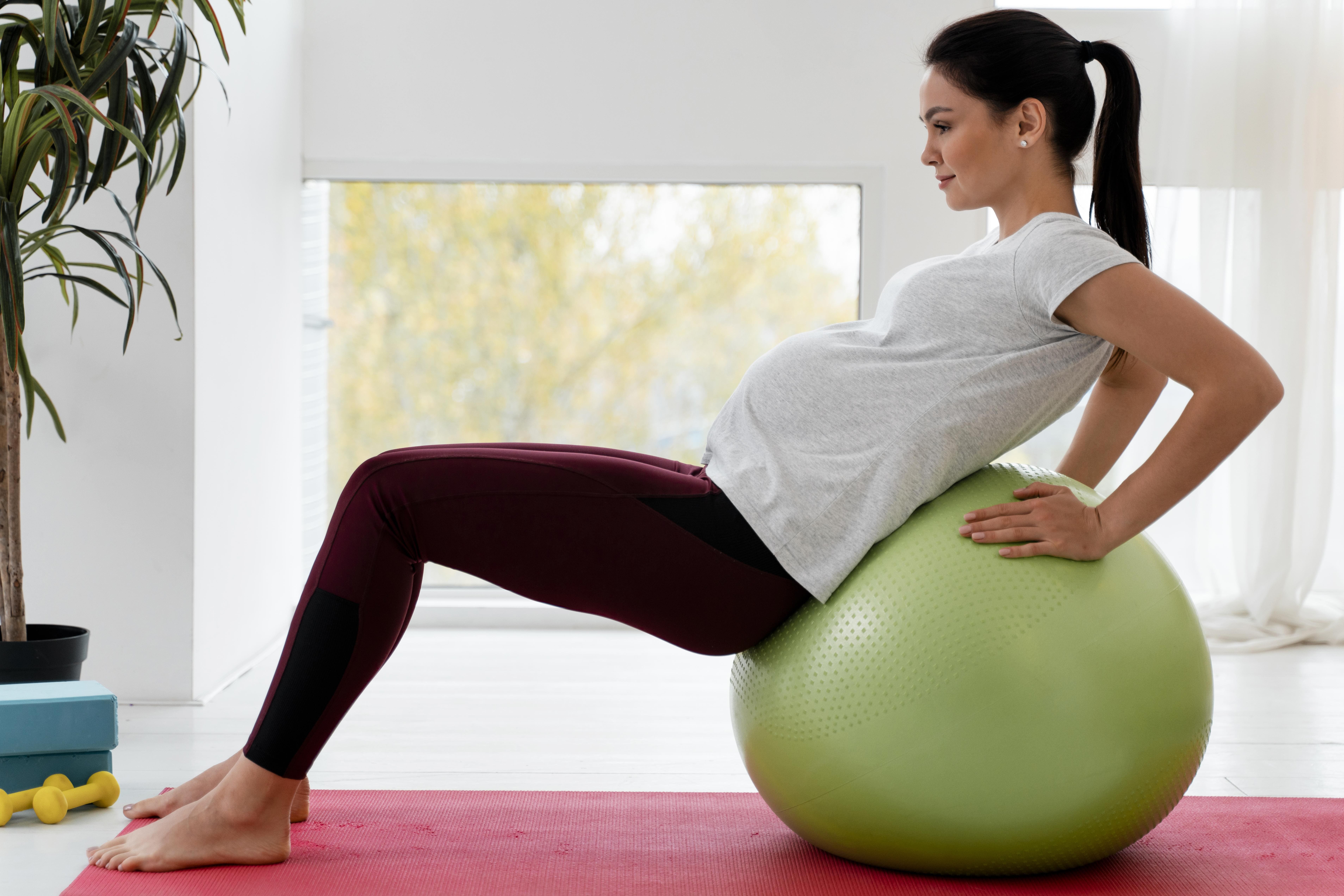Blogs

Prenatal Yoga For Pregnant Women
Are you expecting a child? Best wishes! You must be experiencing simultaneous feelings of excitement, fear, happiness, and overwhelm. It's challenging to pinpoint exactly how you're feeling, isn't it? The cramps are awful, but the kicks are amazing. One minute you can be beaming with excitement, and the next you might be filled with emotion. The sensation of having a life developing inside of you is indescribable. Hormonal fluctuations may also cause you to go through phases of mood swings. For this reason alone, doing yoga can be a pregnant lifesaver.
- Prenatal Yoga helps to maintain the body's flexibility. By expanding the pelvic area, they release stress in the area surrounding the cervix. This gets expectant mothers ready to give birth.
- You can learn to breathe deeply and to relax intentionally with yoga and pranayamas, which will help you cope with the demands of labor and delivery.
- Common pregnancy symptoms like morning sickness, excruciating leg cramps, swollen ankles, and constipation can be lessened with the help of pregnancy yoga.
- Additionally, yoga poses hasten a pregnant woman's postpartum recovery.
Pregnant women must do yoga. The prenatal yoga poses that follow focus on two common issues faced by expectant mothers: a changed center of gravity and lower back pain
1. Cat Stretch, Marjariasana
The Marjariasana technique:
- Konasana-I (Standing Sideways, Bending One Arm) is a yoga pose for pregnant women.
- Releases tension in the shoulders and neck by stretching them. maintains the spine's flexibility.
- This is helpful because as pregnancy progresses, the back must hold an increased amount of weight.
- Tones the area around the abdomen.
- Ensures that the reproductive organs are properly nourished by improving blood circulation.
Konasana-I (Standing Sideways, Bending One Arm) is a yoga pose for pregnant women.
The Marjariasana technique:
- Maintains the spine's flexibility..
- Stretches and works the body's sides.
- This is helpful because as pregnancy progresses, the back must hold an increased amount of weight.
- Reduces constipation, a typical pregnancy symptom.
- Advantages for Konasana
- Stretches and tones the abdominal cavity, legs, and arms.
- Stretches and strengthens the back.
- Warrior Pose (Veerbhadrasana) in Yoga for Expectant Mothers
- Improves the body's equilibrium.
- Shapes the lower back, legs, and arms.
- Boosts endurance.
- Eases back pain.
- Enhances the blood supply to the pelvic area.
- Reduces varicose veins and swelling ankles, which are frequent pregnancy symptoms.
- Increases groin and hip flexion flexibility.
- Eases pain by stretching the knees and thighs.
- Alleviates weariness.
- When performed up till the late stages of pregnancy, aids in a seamless delivery.
- This pose helps the body relax and repair cells.
- This promotes self-healing, which is essential because pregnant women shouldn't take medications.
- Reduces tension.
- Eases anxiety and tension.
- Aids in blood pressure regulation.
- Deeply soothes all of the body's cells.
- Pregnant ladies should exercise caution when doing yoga.
Prenatal Yoga Dos:
- Avoid yoga poses that strain on the abdomen when you are farther along in your pregnancy.
- Practice standing yoga poses during your first trimester of pregnancy. Both circulation and leg strength will be improved by doing this. It even lessens cramping in the legs.
- Limit the amount of time you spend in asanas during the second and third trimesters to avoid becoming fatigued. Replace with meditation and breathing techniques.
- During the 10th and 14th weeks of pregnancy, avoid doing yoga as these are really important times.
- Steer clear of inversion stances.
- Take note of your physical condition and make every effort to avoid overdoing it.
Prenatal yoga positions to avoid
- Boat Pose, or Naukasana.
- Wheel Pose, or Chakrasana
- Ardha Matsyendrasana, or the Twist of the Sitting Half.
- Cobra Pose, or Bhujangasana
- Shalabhasana Viparita (Superman Pose)
- Standing in Plough Pose.
It is best to speak with a doctor before beginning any kind of yoga program while expecting. Under the guidance of a certified yoga instructor, learn and perform yoga poses.
Yoga is not a replacement for medication, but it does aid in the development of the body and mind. Yoga must be studied and practiced under the guidance of a certified yoga teacher. Practice yoga only after discussing any medical conditions with your doctor and a yoga teacher.
Mrunali Thakare
